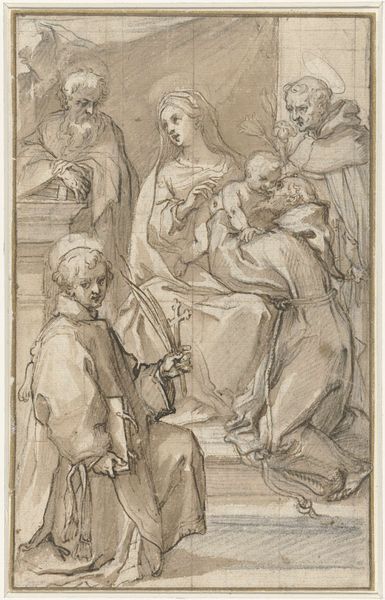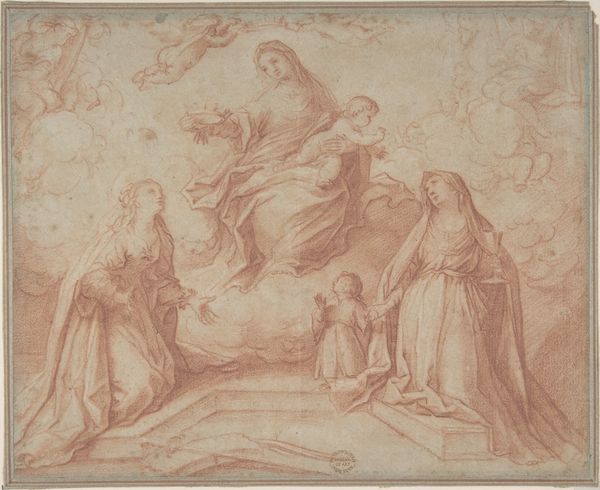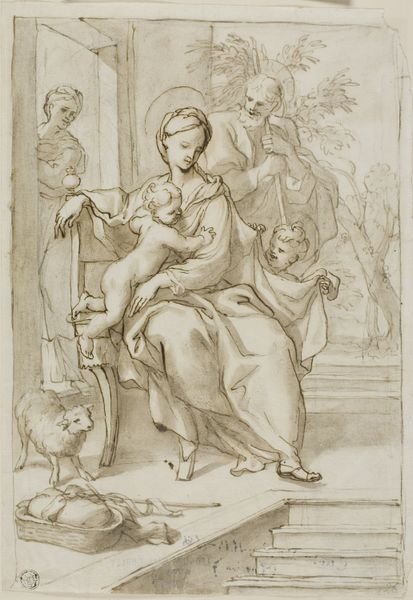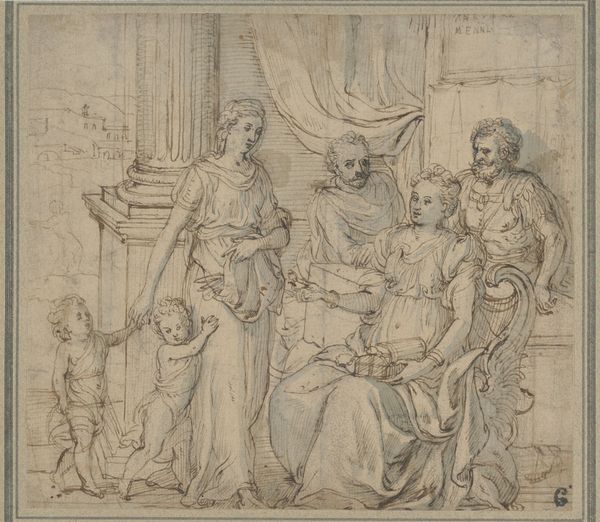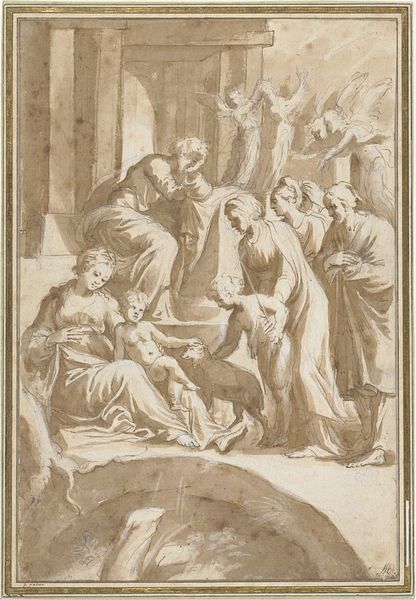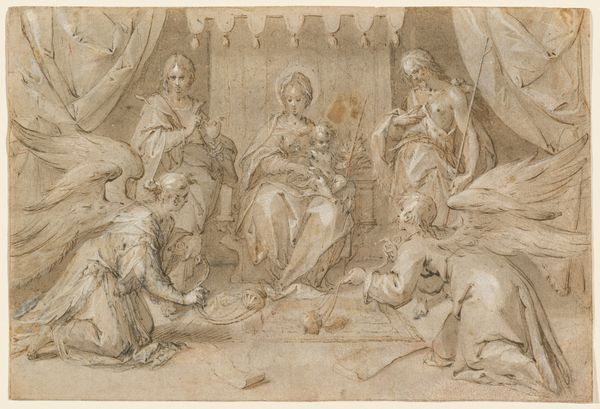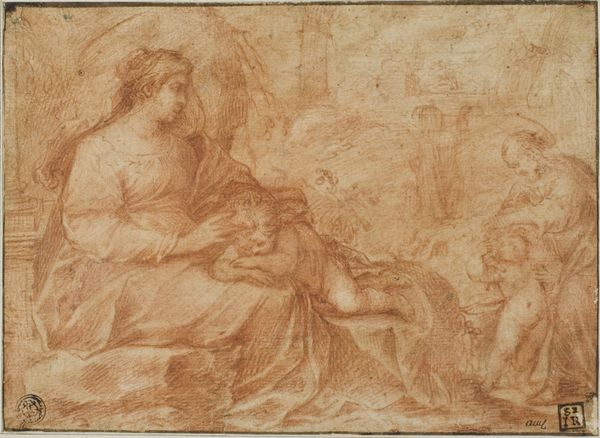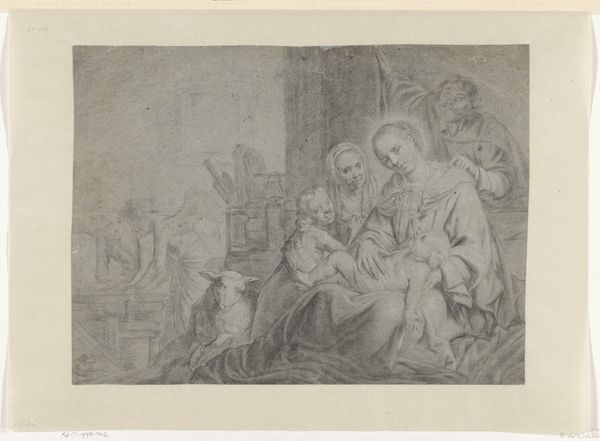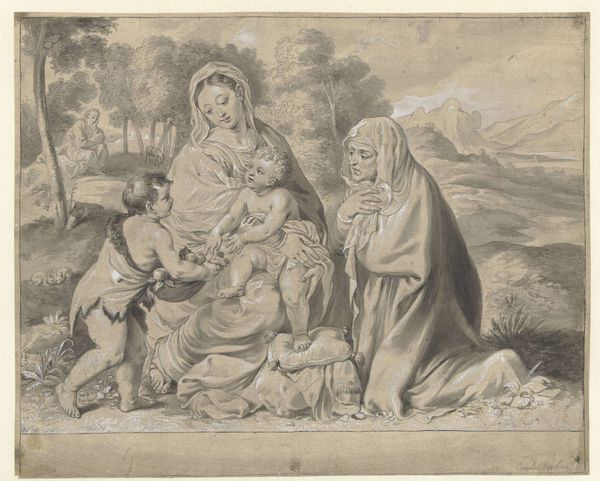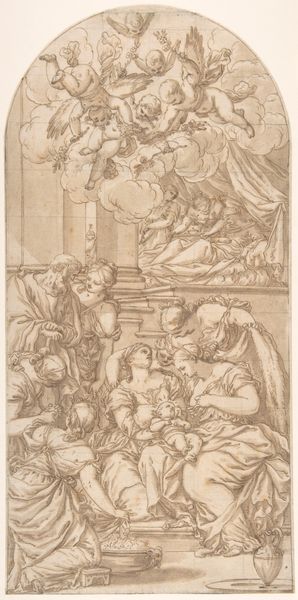
De heilige familie aanbeden door een monnik met een hond c. 1629 - 1690
0:00
0:00
drawing, paper, ink, pencil
#
portrait
#
drawing
#
toned paper
#
light pencil work
#
baroque
#
pencil sketch
#
figuration
#
paper
#
personal sketchbook
#
ink
#
pencil drawing
#
ink drawing experimentation
#
pen-ink sketch
#
pencil
#
sketchbook drawing
#
portrait drawing
#
pencil work
#
history-painting
Dimensions: height 233 mm, width 276 mm
Copyright: Rijks Museum: Open Domain
Curator: The artwork before us, housed here at the Rijksmuseum, is a drawing titled "The Holy Family Adored by a Monk with a Dog" by Charles Le Brun, estimated to have been created sometime between 1629 and 1690. It’s rendered in pencil and ink on toned paper. Editor: The first thing that hits me is this incredible humility in the monk’s pose, right? Like, he's completely giving himself over to this divine moment, while this little dog just kind of chills next to him, unfazed by the sacred scene. The lightness of the lines gives it an airy, ethereal quality. Curator: Absolutely, the toned paper provides a fantastic backdrop to accentuate that effect, offering depth that highlights Le Brun's mastery of light and shadow. Think about the period and the pervasive influence of the Church in social structures, religious works such as these would have been very much entrenched in people’s daily lives. Editor: And what is with Joseph's pointing? It looks to me like that 'get out of here!' hand gesture we always think of for this biblical dude. Mary and Baby look a little peeved! That human element gives the sketch its relatable accessibility. Curator: A key element in the baroque style. These depictions served to humanize religious figures. Artists and the Church together sought to make the Holy Family seem relatable to all. The placement and submissive posture of the monk, the dog as a symbol of fidelity. The socio-political climate craved iconography and its use. Editor: I’m finding it beautiful in its quiet intimacy. It captures a sense of reverence but in such a gentle way, far from the dramatic theatricality we often associate with Baroque art. It feels, more than anything, a meditation. Curator: A powerful point. Perhaps it’s the medium itself lending that sense of quiet reflection, providing that accessibility that you mentioned earlier. It’s worth considering what the act of drawing itself, might say about the context. It's direct; the transfer of the idea, a spontaneous, reflective creation. Editor: For me, standing here, it is just incredibly moving to see a vision of grace captured so simply. It makes one contemplate devotion and faith—the human side of the sacred, even for skeptics. Curator: It is definitely something to witness that an image created centuries ago can still touch and resonate with us in so many ways today. The artist's study becoming an impactful testament across time.
Comments
No comments
Be the first to comment and join the conversation on the ultimate creative platform.
